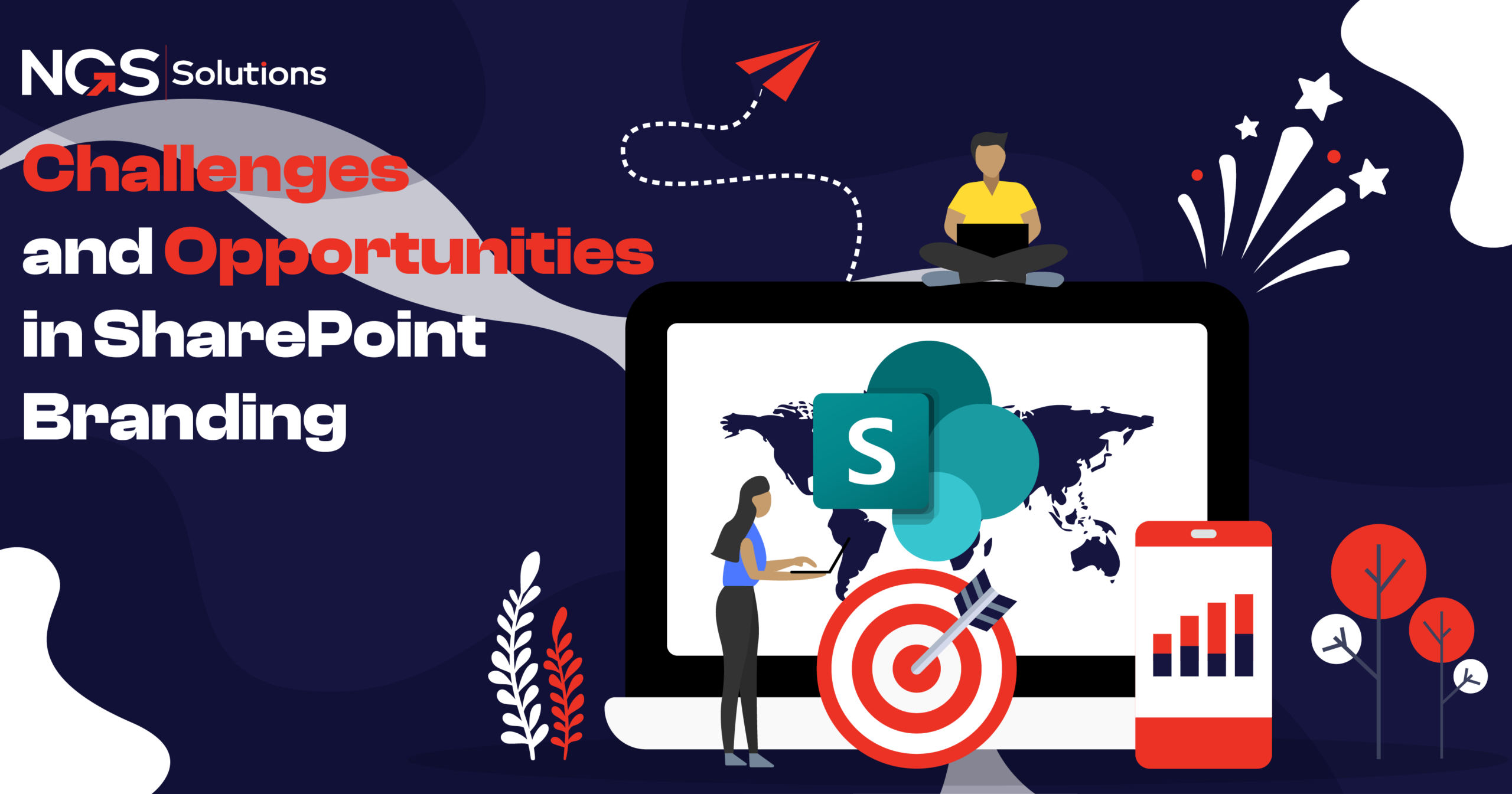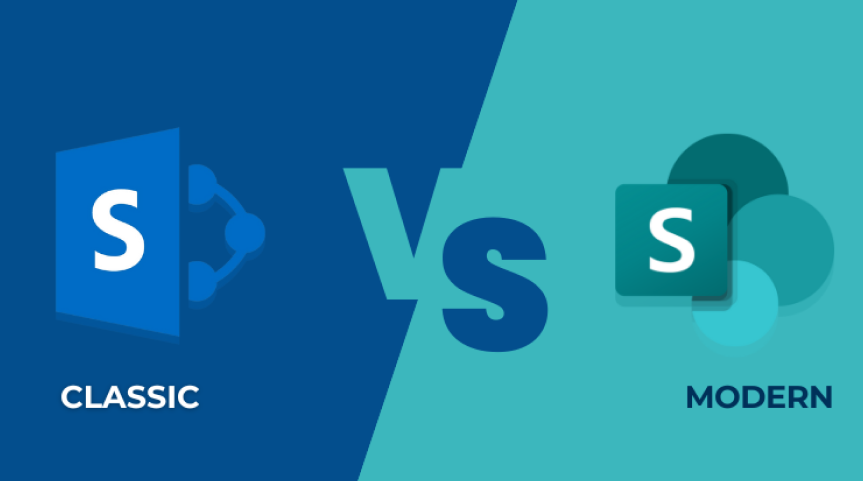What Outweighs? SharePoint Benefits Or Dilemmas?
Have you ever felt unhappy when you logged into your company’s SharePoint site and felt like it didn’t match with your company’s goals? Maybe the colors didn’t match, or the navigation was too difficult! In such a scenario, what is the ideal solution? Many businesses opt for SharePoint branding to stay away from such heartbreaks!
When you integrate SharePoint, collaboration and content management is on fingertips! But does it match with your company’s brand, culture, and goals? Branding SharePoint is something more than changing a logo or updating the visual elements. Modern SharePoint offers an attractive and made-to-order environment. After all, that not only looks good but works flawlessly for your team!
SharePoint Customization – Your Business’s Success Story!
SharePoint experience with focus on branding offers great user engagement. But it also brings many challenges. These consist of technical bottlenecks, user adoption issues etc. This is when SharePoint customizations feel like a big task! Overall, it is ideal to balance between the SharePoint branding pros and cons to get the true value out of it!
In this blog, we’ll explore the main challenges and opportunities of SharePoint branding. So you can understand how to turn a basic platform into a powerful tool that manifests a company’s identity at every click! Businesses that consider SharePoint branding services take the lead! Ready to dive in? Let’s explore in detail!
Understanding SharePoint Branding
What is SharePoint Branding?
SharePoint is a process to customize the look and feel of a SharePoint site. The purpose is to match SharePoint interface with your organization’s branding and company identity. This consists of visual elements, as well as UI and UX design. Wouldn’t it be great that all these elements match with the needs and choices of your users?
SharePoint Online vs. SharePoint Server: Understanding Your Branding Environment
When it comes to branding of your SharePoint environment, the decision between SharePoint Online and SharePoint Server can impact many things. These include design options, flexibility and overall user experience.
Both SharePoint Online and SharePoint server bring about strong collaboration tools. However, they are different. The way you want to pick personalization or set the brand presence, sets them apart! Factually, SharePoint Online has a cloud-based integration. It offers automatic updates and smooth integration with other MS tools.
As you plan for branding SharePoint Online, your main focus will be on the modern design features. These are responsive page layouts and the SharePoint Framework. SharePoint Online’s platform is scalable and friendly. It is ideal for businesses that look for easy, quick, and updated solutions.
On the other hand, SharePoint Server offers full control over the branding environment. If your business requires sophisticated, personalized themes, SharePoint is your go-to platform! The flexibility it has tailors every detail of the user interface.
Modern vs. Classic SharePoint Sites: Choosing The Right Framework
When it comes to SharePoint branding, the choice between Modern and Classic sites is vital. At the end of the day, creating a smooth and engaging experience for your users is the goal! Both of these frameworks have their pros, but understanding their cons will help to pick the one that matches with your branding goals.
Modern SharePoint sites have a smooth and agile design. The other latest features are web parts, easy navigation and built-in support for mobile devices. In a SharePoint environment, modern sites allow for a user-friendly experience.
While branding these sites, SharePoint framework lets the developers create custom web parts. The main focus is on simplicity, speed and a clean design. For businesses that look for a cutting-edge look with less issues, Modern is the best!
Class SharePoint sites offer great flexibility. You can have full power over themes, master pages and layouts. So, be glad to have complete freedom to create a highly customized and thorough UI. However, Classic sites can be more difficult to maintain. They are also not mobile-optimized which affect the overall UX.
So, which should you choose for your branding? If you’re looking for ease of use, scalability, and a modern look, Modern SharePoint Sites are your go-to. But, if deep customization and control are your priorities, Classic SharePoint Sites might still have the upper hand! Choose wisely to align your branding strategy with the framework that suits your business needs.
Key Components of SharePoint Branding
When it comes to SharePoint branding, there are many important features that help change a basic site into a made-to-order experience. Here’s quick look of it:
- Themes: The theme sets the complete theme of your SharePoint site. Surely, it is the first thing that your users see. Hence, a SharePoint site should have a brand look that upgrades your business right from the start!
- Layouts: Layouts refers to the structure of your pages. You can think of them as blueprints. They speak of how your content is put on view. Be it a page template or SharePoint framework, layouts keep your site put in order and are easy to route!
- Logos: Your logo is a symbol of your brand. When it is part of the SharePoint design, it helps your brand to have a separate identity. Thanks to the logo, it reminds your workers that they are communicating with the official company platform.
- Typography: The fonts you use show your brand’s personality. Businesses use fonts according to the brand. Whether it’s modern, casual or professional, typography helps define your site’s tone. If you plan branding for SharePoint, don’t forget the key aspect of typography!
- Navigation: SharePoint sites provide users with relevant content. On the other hand, difficult navigation ruins everything. Therefore, to improve usefulness, intuitive menus, search bars, and links matter a lot!
Why SharePoint Branding Is Important?
SharePoint branding is not just focused on making a site look attractive! Once all the key elements are in place, SharePoint customizations offer great benefits. So to get it done the best way, consider the reasons given below:
- Brand Consistency: Are you of the mind to ensure that SharePoint matches with your company? You might not be aware but the fact is that the organization’s identity has to be checked across all touchpoints. When you are successful in developing a steady visual identity, it is important to put forward trust and reliability.
- Improved UX: A well-branded SharePoint site is not just attractive. But it also provides value. SharePoint sites provide users a great experience so they adopt it and engage with it well.
- Enhanced Internal Communication and Collaboration: SharePoint acts as a central hub for communication and collaboration. A made-to-order SharePoint interface promises workers’ engagement and lets the teams and locations work together.
Ready to improve your SharePoint experience? Whether you’re starting from scratch or looking to refresh your current design, the opportunities to customize SharePoint are endless.
Let’s talk about how we can make SharePoint work for you!
Challenges in SharePoint Branding
In the SharePoint environment, branding is rewarding. But there are many challenges linked to. Let’s discover them in detail:
Technical Limitations
- Default Features vs. Customization Options: SharePoint has an all-inclusive toolkit of features. However, the default templates and functionality may not always match with your branding needs. This flip side may require ample changes, which can be technical.
- Complexity of Custom Development: In today’s world, your business can face difficulty of custom development especially in modern SharePoint. To improve the look and feel, advanced SharePoint branding is key. For many organizations, it can be difficult without the help of development teams.
- Compatibility Issues: Custom branding features may not suit all the devices. This results in poor user experiences in the SharePoint community where ideas are discussed. Hence, get in touch with a reliable provider for SharePoint branding services to set the site in a way that offers users a great experience.
SharePoint’s Evolving Architecture
- Classic vs. Modern SharePoint Experience: Today, SharePoint has grown from the classic experience to a more modern and smooth version. This change may bring a few challenges. Your next step would be to focus on maintaining branding in modern SharePoint.
- Frequent Updates: SharePoint is constantly updated by Microsoft. Such updates may change the way custom branding is used. IT teams have to do extra upkeep because new features break current SharePoint customizations.
User Resistance to Change
- Adoption Challenges: The team members are often used to the regular look and feel of SharePoint. So, it is no surprise that they may show reluctance when major changes are introduced. Sudden changes in the SharePoint branding can confuse users and keep them upset.
- Training and Support: Workers may need training to understand a brand new SharePoint site. It is especially important if there are major changes. The major changes come in navigation, functionality and features.
Cost and Time Investment
- Higher Budget for Customization: Achieving a branded and made to order SharePoint site can cost you much. When you hire developers, purchase third-party tools or bring in consultants, it all adds to the budget of your project. Sadly, for small businesses, it is actually a problem.
- Longer Development Time: SharePoint customizations take time to meet the unique needs of an organization. By focusing on both branding and rolling out a site, it can be difficult.
Opportunities in SharePoint Branding
Despite these problems, there are many opportunities for organizations to invest in SharePoint branding. Let’s discover them in detail:
Enhanced User Experience (UX)
- Personalized User Interfaces: As you go for custom branding, you can create personalized and user-driven interfaces. This allows you to adjust different sites and pages. Hence, it is easier for workers to access the information they need.
- Improved Navigation: UX is incomplete without convenient navigation. Modern SharePoint side should help users find documents, tools and other resources faster.
- Increased Employee Engagement: A branded SharePoint acts as a pride for your company. It keeps on reminding the workers that it matches with the organization’s culture and identity.
Better Integration with Corporate Identity
- Stronger Brand Alignment: Isn’t it great that SharePoint customizations align well with the company’s logo, colors, fonts and visuals? To get this seamless brand experience, trust SharePoint branding.
- Department-Specific Customization: SharePoint customizations often have a focus on departments. Different departments can have their own branded SharePoint sites. For example, HR, marketing, and IT can each have distinct sites that suit their functional needs.
Mobile-Friendly Branding
- Responsive Design: As your team grows, it is vital to make sure that SharePoint branding is mobile-friendly. Modern SharePoint offers features of customizations in which employees can access documents, updates and collaboration tools. Whether it is a desktop, tablet or a smartphone, customizing SharePoint can result in positive outcomes.
- Increased Mobile Engagement: Because you prioritize mobile experiences, you foster user engagement too. This helps the team members to stay connected no matter the location.
Improved Collaboration and Productivity
- Fostering Collaboration: A tailored and easy-to-use SharePoint interface helps employees to get in touch with one another more frequently. Therefore, the SharePoint environment turns out to be great for collaboration and team dynamics.
- Custom Dashboards and Widgets: Branding SharePoint with custom dashboards and widgets offers chances to improve the team’s output. They can have easy access to tools and information they need.
Best Practices for Effective SharePoint Branding
To ensure that SharePoint branding is done correctly, follow these best practices:
Focus on Consistency
- Branding SharePoint is not easy. But as you focus on consistency, match SharePoint branding with the company’s style. Consistency should be in fonts, colors, logos and other elements.
- The user experience should be the priority. For this reason, navigation and ease of use matter. The user experience should be intuitive, making it easy for workers to find and use what they need.
Utilize SharePoint Framework (SPFx)
SPFx lets developers create a modern and flexible SharePoint framework. By using SPFx, organizations can create responsive and scalable designs that work within MS’s supported structure.
Keep It Simple and Clean
- Avoid cluttered designs: A clean and straightforward SharePoint interface helps workers focus on their works instead of being distracted. If there are many design elements, it can cause problems for team members.
- Be mindful of cognitive load: Too many fonts, colors, or images can puzzle users and make navigation difficult.
Test and Iterate
- Add on ongoing feedback from users to make sure that the branding matches with their needs.
- Incorporate continuous feedback from users to ensure that the branding aligns with their needs. Conduct usability testing to improve the design and make changes as needed.
Tools and Technologies to Simplify SharePoint Branding
Several tools and technologies can simplify the process of SharePoint branding:
- SharePoint Designer: SharePoint designer offers personalized options for classic SharePoint sites.
- Microsoft Power Apps and Power Automate: Power Apps let low code customization for workflows and interfaces. On the other hand, Power Automate helps to improve processes and improve the overall user experiences.
- Third-Party Tools: The third-party tools like Plumsail and Virto provide pre-built solutions to customize SharePoint. This doesn’t need any extensive technical knowledge.
- SharePoint Framework (SPFx): SharePoint framework enables flexible and modern customizations. They can be set as per the SharePoint updates.
Measuring the Success of SharePoint Branding
KPIs play a great role when it comes to assess the success of your SharePoint branding efforts such as:
- User Engagement: To measure user engagement, monitor metrics are available. The common metrics are site visits, usage rates, and time spent on the platform.
- Employee Adoption Rates: Track the number of active users to evaluate how well the new branding is received.
- Performance Indicators: Measure improvements in output, collaboration, and internal communication post-branding.
To Wrap Up
When it comes to SharePoint branding, it has both challenges and opportunities! While technical limitations, user resistance, and low budgets can make the process difficult, the rewards are many. A customized SharePoint environment offers greater brand consistency, a better user experience, and improved collaboration.
Organizations that can successfully lead the way to a branded SharePoint site offers user engagement, collaboration and output. For branding SharePoint, it is ideal to follow best practices, using the right tools and to prioritize the user experience.
Unlock the Full Potential of Your SharePoint!
Are you looking to take your SharePoint experience to the next level with a fully customized, branded solution? Our expert SharePoint branding services will ensure your portal not only aligns with your business identity but also provides an intuitive, user-friendly experience.
Get in touch with our team today to discuss how we can transform your SharePoint environment with tailored branding that improves both functionality and visual appeal!






